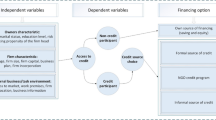Abstract
The tribal communities in central India are excluded in many ways from accessing and benefiting from the fruits of mainstream development. Within tribal groups, women are more marginalized and sidelined than men despite their multiple roles in the household. Women’s exclusion from the mainstream knowledge systems, market sphere and their limited access and control over the resources affects the overall development of tribal communities. Key for economic growth of tribal communities is the equal participation and promotion of women’s physical and economic rights. This necessitates for a purposive design of activities and institutional mechanisms for both socially inclusive economic empowerment and environmentally sustainable growth by building their knowledge and skills to restore NTFP-based value chains for sustainable livelihoods. The present paper is an attempt to analyse and document the findings of an inclusive Lac livelihood model executed by Udyogini, a national-level NGO established by World bank in 1992, with support of PACS to address the geographical, social, technological and economic inclusion of tribal women in the Lac supply chain and downstream market integration to improve their incomes in Gumla district of Jharkhand state. It is found that by employing inclusive strategies, scientific technologies and participative approaches, the socially excluded women could be organized, engaged and integrated successfully by leveraging proven Lac-based livelihood model in the value chains and markets for increasing their incomes. The women demonstrated entrepreneurial abilities to handle markets and acquired economic empowerment over the incomes generated for family needs, mostly for education and health, while in some cases for assets building. The case study provided ample evidence that disadvantaged women could be receptive, Cooperative and capable of acquiring new skills and leadership responsibilities for value chain refinement, micro-enterprise development and management through appropriate training and skill building. Udyogini in partnership with PACS has revived the neglected and insignificant Lac-based livelihoods for social and economic inclusion of tribal women through inclusive approach in the trouble torn Gumla district in Jharkhand.



Similar content being viewed by others
Notes
For more information about Udyogini, please visit the website: www.udyogini.org.
For more information about PACS Programme, please visit the website: www.pacsindia.org.
Unpublished report entitled “Market Assessment and Value Chain Analysis of Lac in Gumla district of Jharkhand” by Udyogini in 2013.
Shellac And Forest Products Export Promotion Council, formerly Shellac Export Promotion Council, sponsored by Ministry of Commerce and Industry, Govt. of India.
The objective of the study was to assess the potential for production and trade of Lac, and its promotion as a rural livelihood enterprise in Kamdara, Gumla, Basia, Sisai and Palkot blocks of Gumla district of Jharkhand State. About 30% of the targeted population of 8000 Lac producers from five selected blocks of Gumla district was taken for the base line study.
References
Aasland A, Fløtten T (2001) Ethnicity and social exclusion in Estonia and Latvia. Eur Asia Stud 53(7):1023–1049
Bennett L (2002) Using empowerment and social inclusion for pro-poor growth: a theory of social change. Background paper for the Social Development Sector Strategy Paper, World Bank, Washington
Bradshaw S (2013) Women’s role in economic development: overcoming the constraints. Sustainable Development Solutions Network, UN
Gharai A, Chakrabarti S (2009) A study on NTFP-related livelihood dependency and people’s perception of the commercialization potential of selected NTFPs in selected locations of Gumla, Hazaribagh & Simdega districts of Jharkhand. Centre for People’s Forestry, Secunderabad
Jackson C (1999) Social exclusion and gender: Does one size fit all? Eur J Dev Res 11(1):125–146
Kujur R (2005) Red Terror over Jharkhand. Institute of Peace and Conflict Studies, New Delhi
Stewart A (2000) Social inclusion: an introduction. In: Askonas P, Stewart A (eds) Social inclusion: possibilities and tensions. Macmillan, London, pp 1–16
World Bank (2011) Social safety nets in Nepal, Draft report. World Bank, Washington
World Bank Report (2007) Jharkhand-addressing the challenges of inclusive development. Report no. 36437-IN
Xaxa V (2004) Women and gender in the study of tribes in India, Indian journal of Gender Studies. Sage Publications, New Delhi
Yogi R, Bhattacharya A, Jaiswal AK, Kumar A (2014) Lac, plant resins and gums statistics 2014: at a glance. ICAR-Indian Institute of Natural Resins and Gums, Namkum, Ranchi
Author information
Authors and Affiliations
Corresponding author
Rights and permissions
About this article
Cite this article
Panda, P.K. Inclusion and economic empowerment of rural-tribal women in lac value chain and market: a case study of Udyogini. J. Soc. Econ. Dev. 19, 25–41 (2017). https://doi.org/10.1007/s40847-016-0032-9
Published:
Issue Date:
DOI: https://doi.org/10.1007/s40847-016-0032-9




